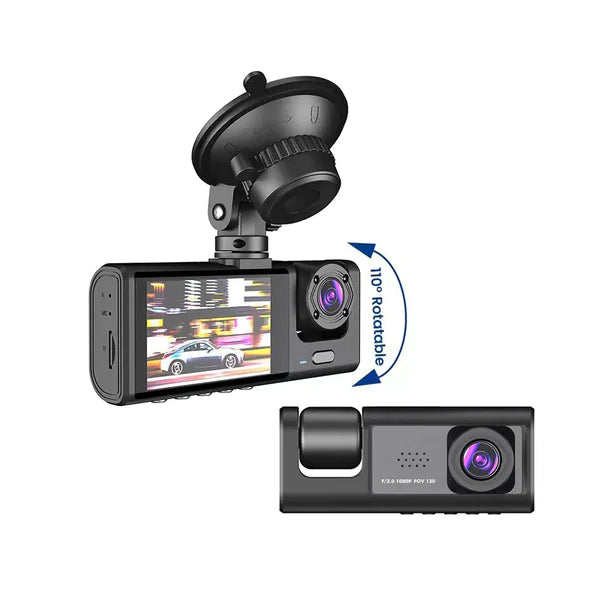Car DVR Evaluation Guide
Definition
A Car DVR (Digital Video Recorder), also known as a dash cam, is a device installed inside vehicles to record video and audio during travel. It captures footage of the road ahead, providing evidence and security in case of incidents.

Parameters
- Video Resolution: Determines the clarity of recorded videos, typically available in resolutions like 720p, 1080p, 2K, and 4K.
- Field of View (FOV): Influences the coverage area of recorded footage, often measured in horizontal degrees such as 120° or 150°.
- Storage Capacity: Affects the duration of recorded footage; commonly utilizes microSD cards ranging from 16GB to 128GB.
- Night Vision: Some Car DVRs feature night vision capabilities, enabling clear recording in low-light conditions.
- Collision Sensing: Automatically saves critical video segments when a collision or sudden deceleration occurs to prevent overwrite.
- Display Screen: Certain models come with built-in screens for real-time monitoring of recorded footage.
Components
Typical components of a Car DVR include:
- Camera: Records video footage.
- Storage Device: Such as a microSD card, stores recorded video files.
- Power Cord: Connects to the vehicle's power supply, providing electricity.
- Mount: Secures the camera inside the vehicle.
- Display Screen (in some models): Allows for real-time viewing of recorded footage.
How to Choose
- Video Quality: Prioritize high-definition recording devices for clarity and detail.
- Night Vision Feature: If frequently driving in low-light conditions, opt for a Car DVR with robust night vision capabilities.
- Field of View: A wider field of view captures more road information, enhancing safety.
- Storage Capacity: Select an appropriate storage capacity based on your needs to ensure recording of sufficient video duration.
- Collision Sensing: Car DVRs with collision sensing capabilities automatically preserve vital video segments in the event of accidents, safeguarding evidence integrity.
- User Reviews: Refer to feedback and reviews from other users to understand a product's real-world performance.
Popular Products
- Blackvue DR900X-2CH: Offers 4K resolution, front and rear dual cameras, and WiFi connectivity.
- Vantrue N2 Pro: Features 1080p resolution, front and rear dual cameras, and powerful night vision capabilities.
- Viofo A129 Pro Duo: Provides 2K resolution, front and rear dual cameras, and supports GPS tracking.
FAQ
-
Is it legal to use a Car DVR? Yes, in most regions, the use of Car DVRs is permitted. However, specific legal regulations may vary, so it's advisable to consult local laws before purchasing and using one.
-
How do you install a Car DVR? Typically, Car DVRs are fixed onto the front or rear windshield using suction cups or adhesive mounts and connected to the vehicle's power supply via a power cord.
-
How do you view recorded footage from a Car DVR? Most DVRs come with microSD cards. You can either remove the card and connect it to a computer or use WiFi connectivity to access footage via a smartphone.
-
How do you clean the lens of a Car DVR? Gently wipe the lens surface with a clean cloth or dedicated cleaning tool. Avoid using cleaning agents containing alcohol or strong acids/bases to prevent lens damage.
Conclusion
A Car DVR is a valuable safety device, providing protection and evidence for drivers. Choosing the right Car DVR tailored to your needs is crucial, and it is hoped that this guide will assist you in making an informed decision.
